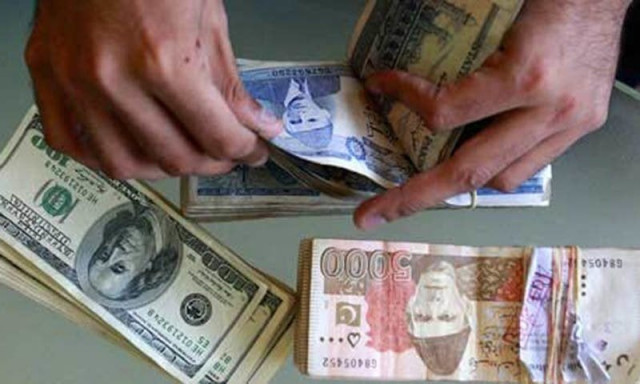Providing more private sector credit
Cheaper loans crucial for job creation, economic efficiency and innovation

Amid early signs of optimism, Pakistan has seen a single-digit inflation rate at 9%, a sharp decrease in interest rates from 22% to 17.5%, and a 3-4% decline in government's Pakistan Investment Bond (PIB) yields to below 13%.
In addition, the rejection of T-bill auctions, a growth of over 40% in remittances, the privatisation of Pakistan International Airlines (PIA), globally moderating energy prices in the $60s per barrel, PKR/USD stability for more than 1.5 years, improved credit ratings from Moody's and Fitch, and the arrangement of external financing commitments from bilateral partners to unlock the $7 billion International Monetary Fund (IMF) Extended Fund Facility (EFF) are all positive developments. While these are welcome signs, they are far from enough.
Pakistan, a country of nearly a quarter of a billion people, mostly young, smartphone-savvy, yet largely low-skilled and under-educated, faces significant challenges. The majority of the population is tied to sectors like agriculture, livestock, retail, transport, and real estate.
This demographic profile is typical of a low-income country struggling to survive annually despite the vast underutilised potential. Nearly 40% (100 million) of Pakistanis live below the poverty line, and 25% of children are out of school.
The country needs a fundamental reset, which requires heavy investment in education, healthcare, job creation, and infrastructure.
Catalysing growth will require private sector borrowing, as the public sector alone cannot drive the economy forward. Pakistan's private sector borrowing is a paltry 12% of gross domestic product (GDP) compared to Bangladesh's 38% and India's 50%. Similarly, the advance-to-deposit ratio has fallen from over 80% to below 40% in the past 15 years.
This period has seen multiple economic crashes, political instability, energy crises, mounting external debt, boom-bust cycles, inconsistent policymaking, and a lack of structural reforms in state-owned enterprises, which continue to burden the government exchequer. Meanwhile, rent-seeking mafias and politically connected businesses thrive.
For Pakistan to punch above its weight, achieve sustainable growth, increase tax revenues, integrate with global value chains, attract foreign investment, and become an industrial hub, affordable interest rates are essential. The government must urgently chart a plan to bring interest rates down to a sustainable 10-12% range.
This should be accompanied by strict controls on luxury and consumption imports, a focus on boosting exports and remittances, and most importantly, incentivising small and medium-sized enterprises (SMEs).
Offering cheaper loans to entrepreneurs at the bottom of the pyramid is crucial. Affordable access to capital is vital for job creation, economic efficiency, innovation, tax collection, increasing real incomes, and ensuring socio-economic stability.
At this point, banks are inundated with liquidity and are merely parking it by lending to meet government's liquidity requirements due to higher spending and low tax collection. If the reforms undertaken by the Federal Board of Revenue (FBR) prove half as effective as envisaged and the government remains frugal in spending and increasing debt, the excess liquidity would be in search of quality borrowers.
Unfortunately, in Pakistan many of the private borrowers are not in the documented sector due to heavy regulations, a higher tax incidence, excessive compliance and bribery culture.
If financial institutions are given tax breaks to lend in terms of job creation, innovative products, exports, import substitution, IT and agri-tech, the country could see sustainable growth. The idea is that the bottom of the pyramid's growth should be more than top 1-10% every year.
Similarly, if strong focus is put on improving the database on business activity instead of arbitrary numbers on business confidence and unemployment, the government can effectively find out which sectors create jobs every month, where are the most job openings requiring particular skillset, what are the internal rates of return (IRRs) and returns on equity (RoEs) of certain businesses growing at an accelerated pace, and how can private sector be enabled to document itself in less than six hours through express registration centres under one window operations.
For that integrated approach, policymakers need to remember their sole goal of quality as well as low-quality job creation because Pakistan needs to have labour-intensive manufacturing jobs instead of capital-intensive ones to employ the large pools of low and unskilled labour.
Currently, Pakistan's 4.5 million SMEs contribute 40% of GDP. If the government enhances the scope of the recently approved PM Youth Loan Programme by offering tax credits to banks and lenders, providing adequate collateral support and risk-sharing mechanisms, setting mandatory lending targets, strengthening the role of Smeda, introducing Shariah-compliant financial instruments, and facilitating utilities, regulatory approvals, and digitisation, Pakistan could easily return to a sustainable growth of 5% or more.
The focus must be on improving the incomes of those at the bottom of the pyramid, rather than benefiting the top 5% elite.
The writer is an independent economic analyst


















COMMENTS
Comments are moderated and generally will be posted if they are on-topic and not abusive.
For more information, please see our Comments FAQ